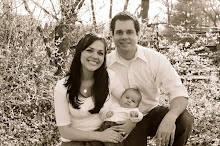The quality of our health care hinges on the abilities of those providing it. While medical professionals are trained in the instrumental aspects of their field, they overwhelmingly lack communication training, particularly in the nonverbal realm (Roter et al., 2002, Monlineuvo et al., 2011). Yet, chances are, if a patient expresses a strong opinion of their practitioner, that professional is either a very skilled or very unskilled communicator. Beyond patient trust and satisfaction, conventional wisdom would tell us practitioners who put patients at ease have a greater chance of gaining more comprehensive and accurate patient histories, in turn yielding more accurate diagnoses. Satisfied patients are more likely to comply with treatment regimens, more likely to remain with one practitioner, refer other patients, and less likely to initiate malpractice suits (DiMatteo et al., 1980; Montague et al. 2013).
An estimated 65% of the meaning in a social encounter is communicated non-verbally. Our nonverbal communication (posture, proximity, tone of voice, gestures, eye contact, etc.) often anticipates, substitutes, modifies, emphasizes, or, interestingly - as in the case of the physician who tells a patient she is happy to answer any questions they might have while avoiding their gaze and keeping a hand on the door knob - contradicts verbal communication. Nonverbal cues may be less susceptible to an individual’s censorship than verbal cues and therefore may more reliably indicate what is being communicated (Griffith, Wilson, Langer, & Haist, 2003).
Patients are often hesitant to verbally express their feelings to their provider, and so the provider’s accurate perception of nonverbal cues may be the only way for him or her to identify patient dissatisfaction or distress and then exhibit the appropriate response (DiMatteo et al., 1980). Also, since the verbal expression of caring and concern is many times uncomfortable or inefficient for the clinician in his or her role, the ability to express emotion through nonverbal cues would be an important aspect of patient trust and rapport as well (Friedman, 1979).
Modern health care providers are often overbooked and pressed for time. Additionally, the recent electronic health care records mandate is changing the nature and quality of American medical visits, with many patients feeling negatively impacted by physicians who seem preoccupied and use less eye contact. Ultimately, practitioners need to know that positive patient relationships can be established without necessarily compromising efficiency, and may be best achieved through effective nonverbal communication.
SO. I'm gathering data through focus groups as well as a survey instrument. I'm posting the link to the latter below - the more responses the better!! If you've recently been to see a doctor, dentist, optometrist, nurse practitioner, etc. (really anyone licensed to diagnose and treat), please feel free to fill it out. Or keep it in mind if you have an upcoming appointment! The survey will be up and accepting anonymous responses until the beginning of November. Many of the questions seem redundant, but are taken from two established, validated measures. Anyway, thanks so much for your time!
P.S. On an unrelated, but significant note - the contractions that were just annoying when I started this post are now getting downright uncomfortable. Wondering if this could be the start of a long night...wish us luck!!










No comments:
Post a Comment